Step into a new world, where education collides with illusion! Students will not observe science at the Museum of Illusions, they will experience it! Through captivating and insane exhibits, students will get hands-on exploration to experience complex concepts in physics, psychology, and perception. The Museum of Illusions will help students learn in an exciting and memorable way!
Discover how each illusion at the Museum of Illusions turns science into a mind-blowing experience!
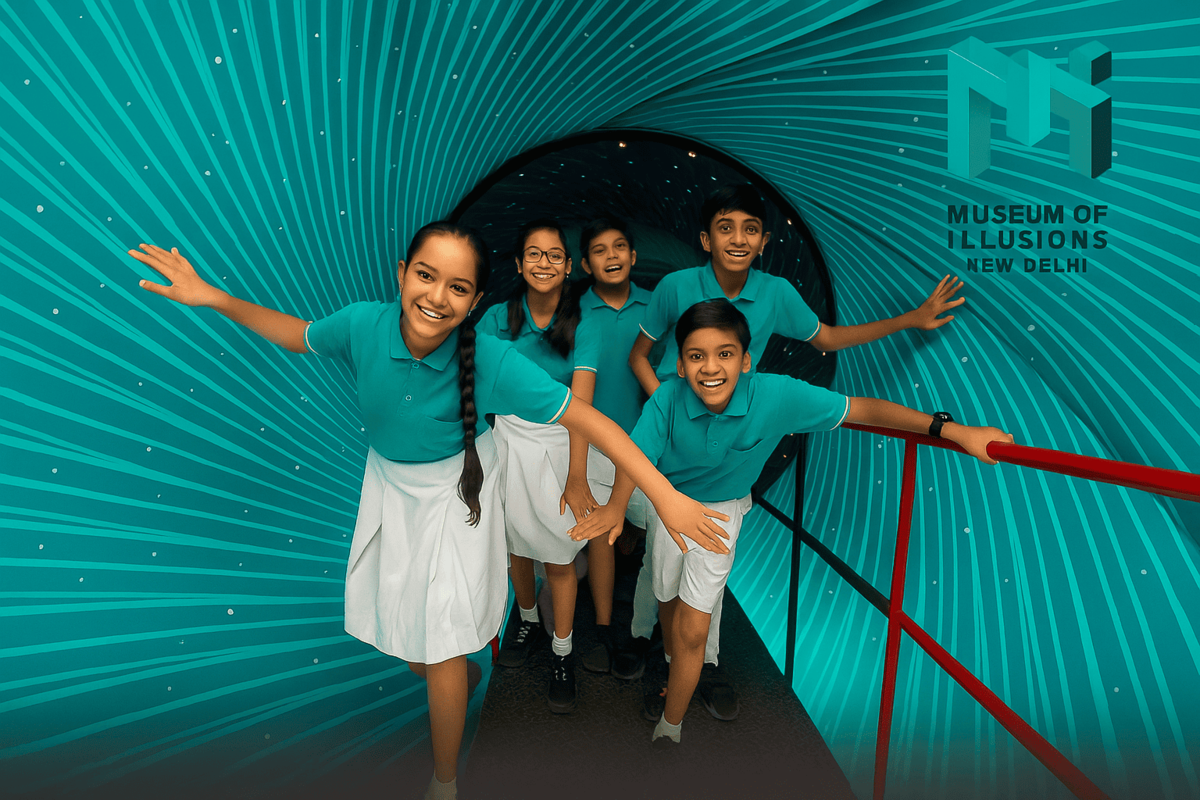
Vortex Tunnel
Walking into the Vortex Tunnel gives the impression that the whole bridge is spinning in a circle—even though there is no movement of the floor at all. The tunnel spins completely 360º around you, which confuses your brain. Your eyes are seeing the spinning walls and sending a message to your brain that you are rotating, but your body does not feel that movement. This disparity makes you feel dizzy or off-balance. It illustrates how the brain must interpret information from the eyes and inner ear (which is responsible for balance). This ties to school concepts such as rotation, motion, gravity, and how the body maintains being upright through multiple senses.

Reverse Room
In the case of the Following Eyes illusion, it appears that the eyes of the sculpture or image are following you as you move and change perspective. The reason for this is that the eyes and face are concave, or curving inward, like the inside of a bowl. Our brain is used to seeing faces that stick out, or are convex, so when it sees the concave shape, it misinterprets depth. The light and shadows bounce in ways that are inconsistent with the brain’s assumptions and make the eyes look like they are moving. This illusion helps students understand light reflection, concave surfaces, perceived depth, and how the brain accesses visual information - all important concepts in optics and vision in the science curriculum.
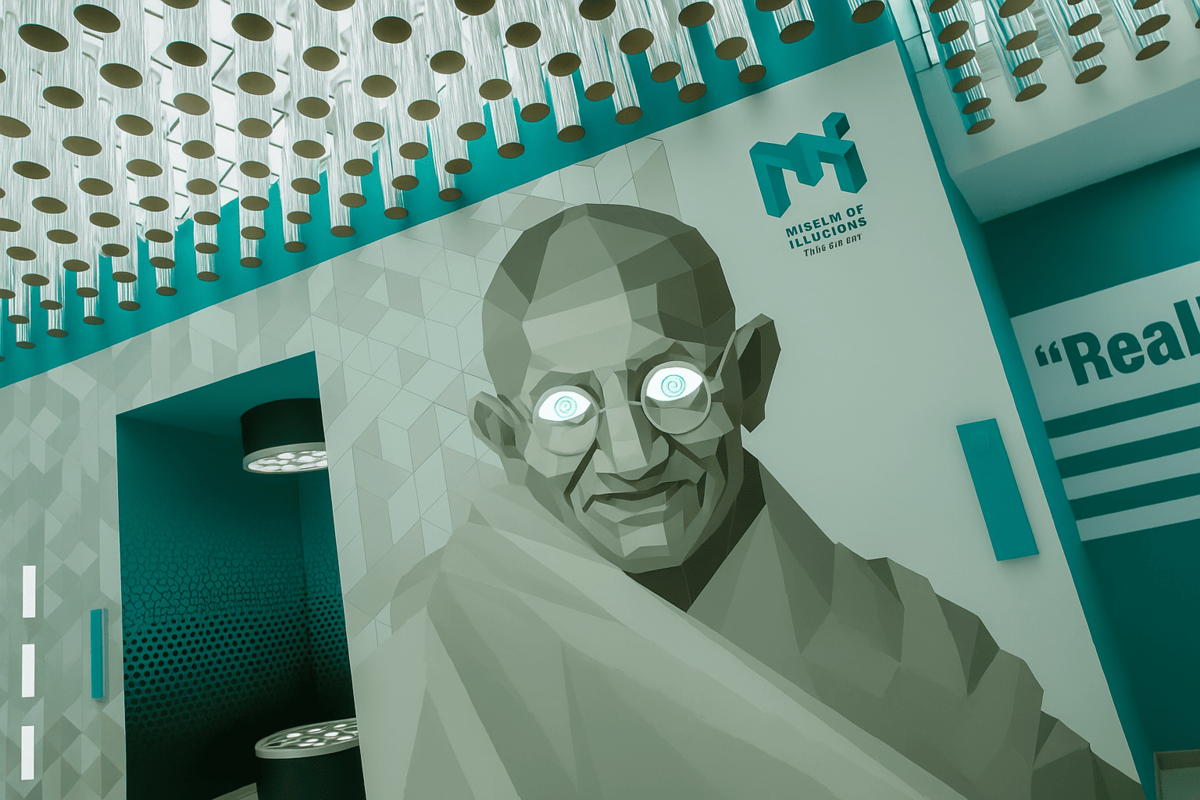
Following Eyes
In the case of the Following Eyes illusion, it appears that the eyes of the sculpture or image are following you as you move and change perspective. The reason for this is that the eyes and face are concave, or curving inward, like the inside of a bowl. Our brain is used to seeing faces that stick out, or are convex, so when it sees the concave shape, it misinterprets depth. The light and shadows bounce in ways that are inconsistent with the brain’s assumptions and make the eyes look like they are moving. This illusion helps students understand light reflection, concave surfaces, perceived depth, and how the brain accesses visual information - all important concepts in optics and vision in the science curriculum.
Building Illusion
In the Building Illusion, it looks as if a person is hanging from a very tall building or floating in mid-air, when in reality they are entirely safe. This illusion is created by a mirror which is a 45 degree angle with the surface, that reflects the ceiling or background of the area to mimic a a person hanging in suspension. The 45 degree angle is very important because it captures the reflection at the right angle and depth to appear suspended. If the mirror were at another angle, 30 or 60 degrees, the picture would be tilted or distorted, or appear out of proportion. This helps students understand how angle of incidence and reflection work and how slight adjustments to the position of a mirror can change what we see. This connects to school topics: reflection of light, perspective geometry, perception of the visual field, and how our brains understand meaning, space and angles through our experiences and knowledge base.
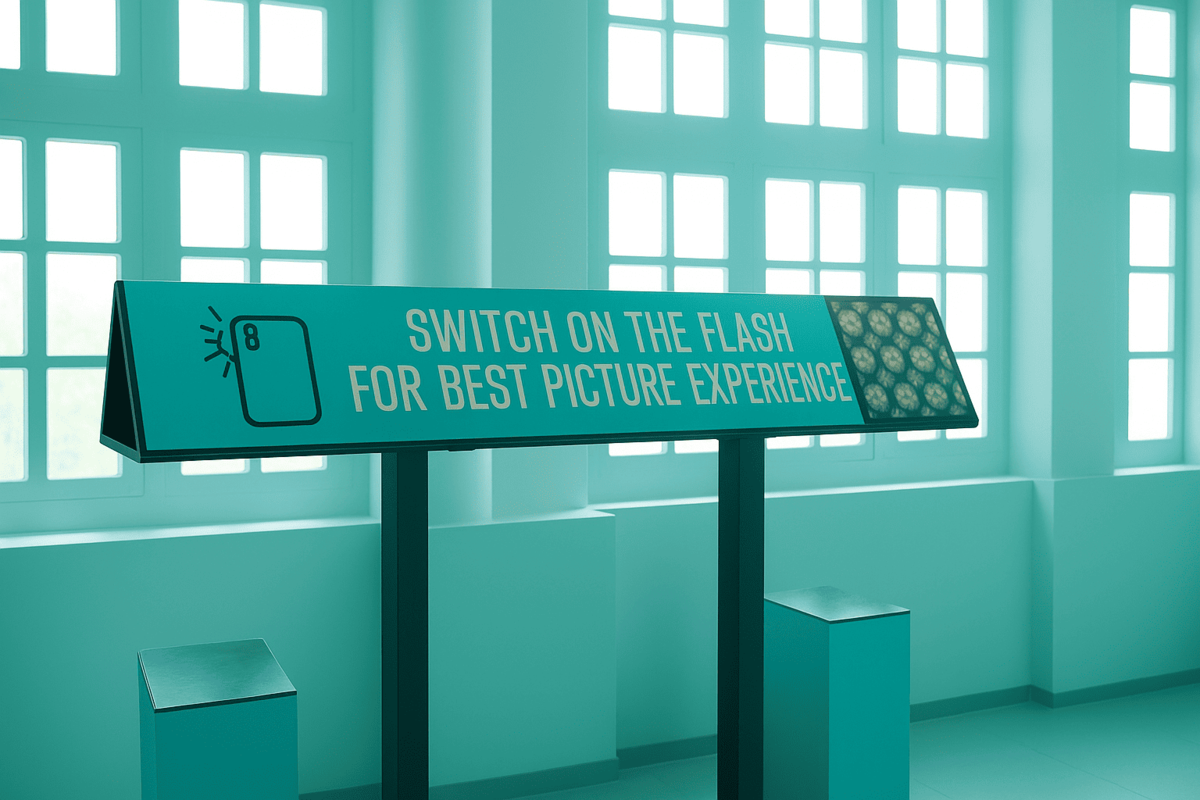
Kaleidoscope
In a sense, the Collider Scope is a giant kaleidoscope. When you peer inside, you would see stunning, repeating patterns. These occur as light reflects from mirrors inside. This project will teach you about reflection, and symmetry as subjects in both science class and mathematics class. The Collider Scope exhibits how light can create patterns by following simple rules.
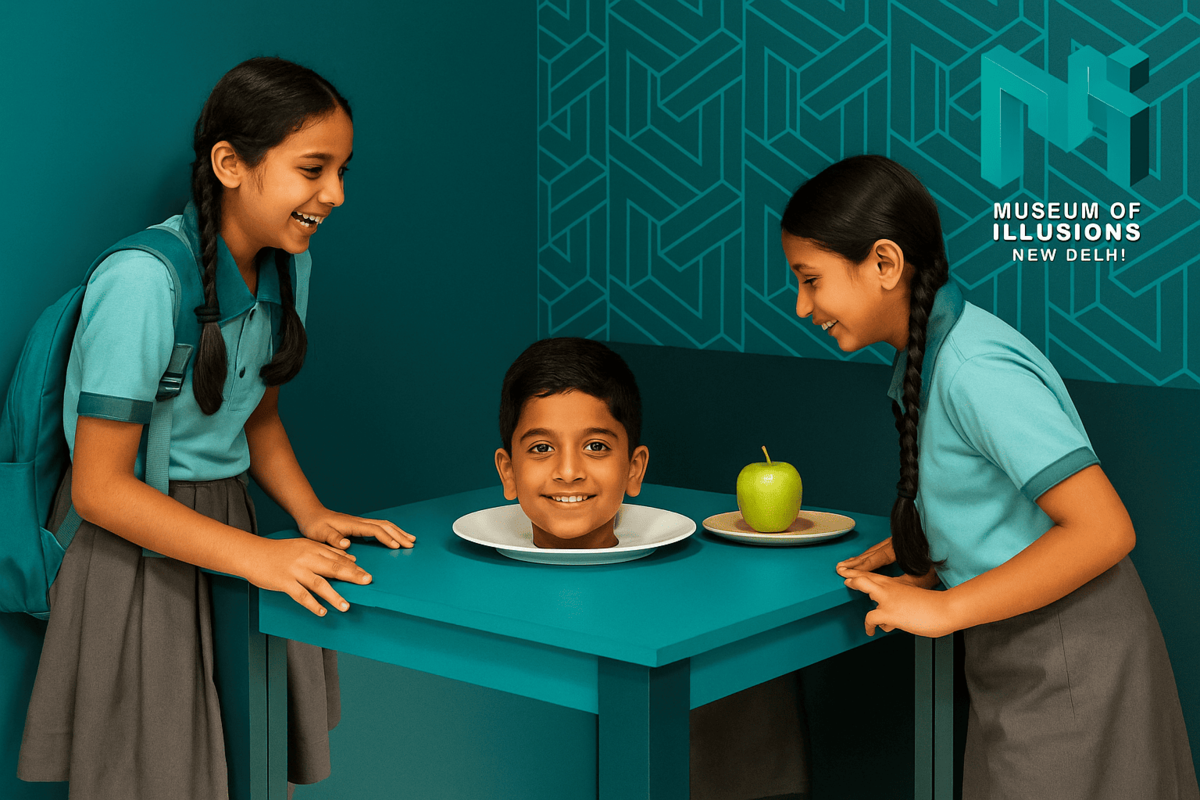
Head on the Platter
Head on the Platter is a visual trick, which shows a head on a plate without a body! The body is just hidden. This illusion demonstrates that light does travel in straight lines and with mirrors, hide or show things depending on your point of view and the arrangement of the props. It is a great way to see how our brain interprets missing pieces of information when we can not see everything.
Infinity Room
The Infinity Room has mirror surfaces on all sides, and tiny lights that appear to infinitely shine in all directions. This shows how mirrors reflect images back and forth. You study about light, reflections, and how we see things in mirrors. It supports students grasping the concept of infinite reflection and light behavior in closed spaces.
Tilted Room
The Tilted Room appears ordinary but is actually built at an incline. Upon entering, you feel that you are falling, even if you haven't moved. It begins to help explain how gravity pulls you downward and how your eyes and brain can send conflicting messages. It relates to balance, force and remaining upright—a great method to learn physics is to feel it!
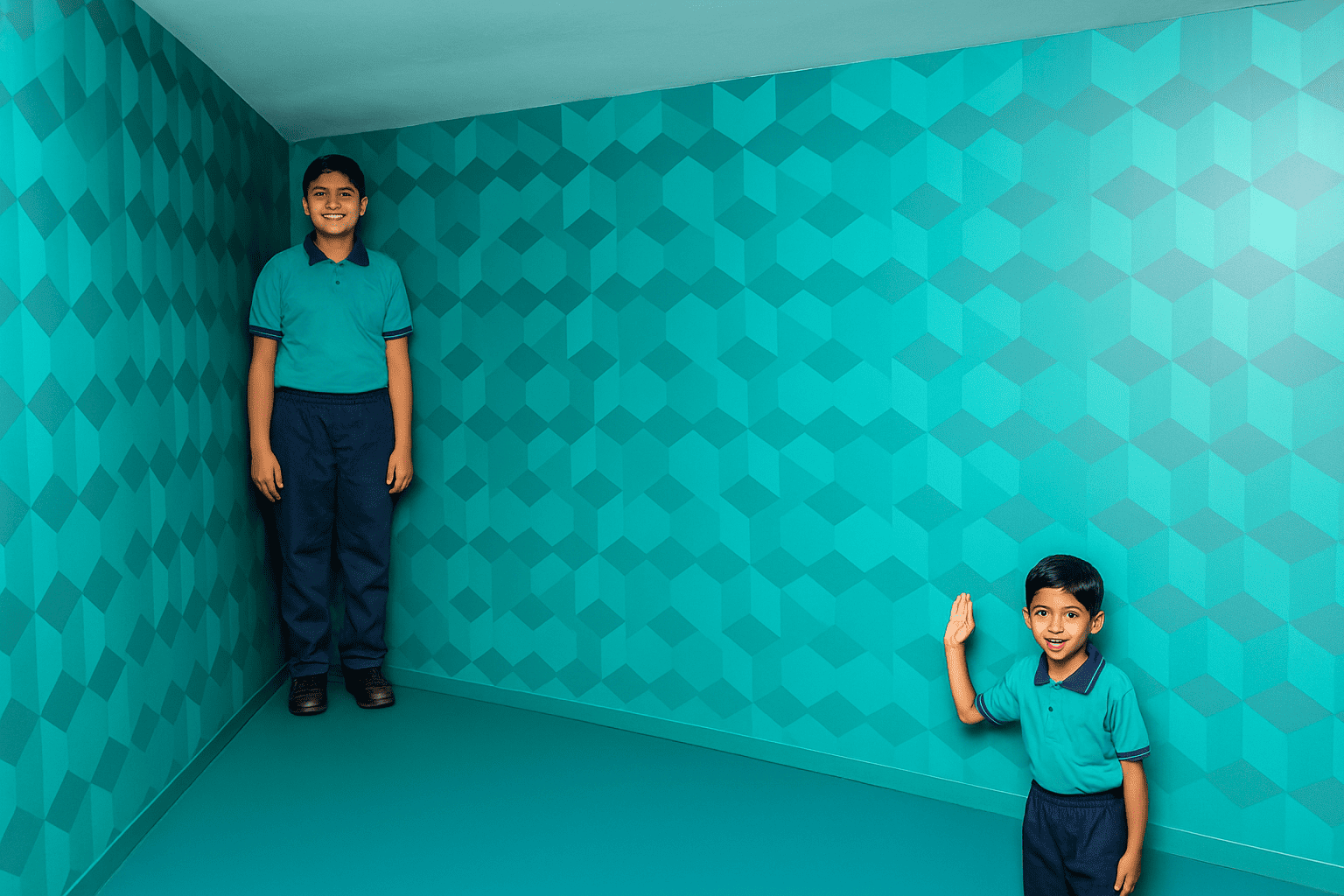
Ames Room
The show Amy’s Room depicts two individuals in a room together, although one appears gigantic and one appears minuscule. The trick lies in how the room is constructed—not as a typical square, but instead slanted and shaped differently. The lesson is about perspective, size, and how our brain signals distance to us, which is helpful to understand the shapes, sizes as well that our vision is based on.
Holograms
Holograms are images that appear to float in the air. Holograms are made with special lights that bounce around and depict an image in 3D. This is teaching about light waves, how images are formed, and how we can use science to create cool things like 3D art, security holograms, and sophisticated displays.
The Museum of Illusions is more than a textbook, a classroom, or any sort of learning environment. It offers students the chance to explore scientific principles through exhibits and experiences that can be experienced first hand. The museum allows concepts that can be abstract in their representation, to be woven into experiential, real, and engaging phenomena, stimulating inquiry, allowing for deeper understanding, and most importantly turning class time not only educational, but truly fun. Science comes to life, and students leave with broadened minds and imaginations invigorated.
